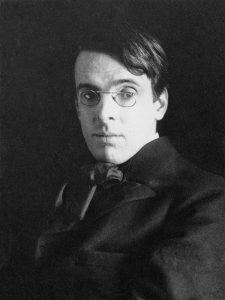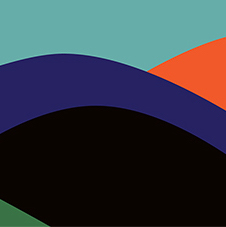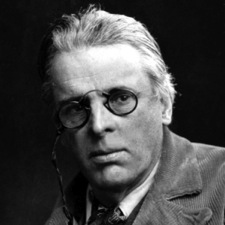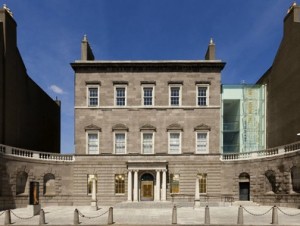If I make the lashes dark
And the eyes more bright
And the lips more scarlet,
Or ask if all be right
From mirror after mirror,
No vanity’s displayed:
I’m looking for the face I had
Before the world was made.
What if I look upon a man
As though on my beloved,
And my blood be cold the while
And my heart unmoved?
Why should he think me cruel
Or that he is betrayed?
I’d have him love the thing that was
Before the world was made.
Published in The Winding Stair and Other Poems, 1933
 William Butler Yeats is considered by many to be one of the greatest poets of the 20th century. Although he spent a portion of his childhood in London, Yeats took a strong ownership in his Irish nationality and maintained his cultural roots throughout his life. This was found in the Irish legends and heroes he presented in many of his poems and plays. In 1923, Yeats was awarded the Nobel Prize in Literature, “for his always inspired poetry, which in a highly artistic form gives expression to the spirit of a whole nation.”
William Butler Yeats is considered by many to be one of the greatest poets of the 20th century. Although he spent a portion of his childhood in London, Yeats took a strong ownership in his Irish nationality and maintained his cultural roots throughout his life. This was found in the Irish legends and heroes he presented in many of his poems and plays. In 1923, Yeats was awarded the Nobel Prize in Literature, “for his always inspired poetry, which in a highly artistic form gives expression to the spirit of a whole nation.”
One thing that serves as a significant aspect of Yeats’ work was his keen awareness of aging, both in body and in spirit. His romantic poems often mentioned weariness, the degeneration of the body, and the wisdom that comes with it.
In this poem, “Before the World Was Made,” Yeats writes from the perspective of a beautiful woman responding to a jealous lover. She begins by acknowledging her efforts to make herself more attractive with cosmetics, “mak[ing] the lashes dark,” “the eyes more bright,” and “the lips more scarlet.” While these actions can be seen as a projection of vanity, the woman chides the lover by saying that “no vanity’s displayed,” but rather that she is “looking for the face [she] had before the world was made.”
Going forward, the woman proceeds to acknowledge the power her beauty allots her, how a simple “look upon a man as though on [her] beloved” while staying “cold” and “unmoved” could make him see her as “cruel” and feel “betrayed.” In response to this, the woman says that she would rather have him “love the thing that was before the world was made.”
Here, the woman reveals that, through her application of cosmetics and her use of her aesthetic beauty, she is searching for her inner beauty, something that was lost “before the world was made.” What’s interesting is that it’s not clear what happened that damaged her inner beauty, that shaped and changed the way she sees the world. The tragic thing about this entire poem is that the woman longs for the inner beauty she wishes to reclaim, and feels that her current, superficial beauty is only a shadow of the woman she was before.
– Virginia Kettles



